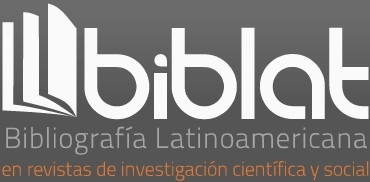Archives - Page 4
-

Semántica e interpretación
Vol. 1 No. 23 (2010)The contributions gathered in this issue attest the dynamic character of the conformation of the sense, and offer through reflection or analysis, different answers about the main questions posed by the relationship between semantics and interpretation, such as: to what extent does what is said guide the interpretation? Does the subject intervene in the production of sense? How do meanings organized by the language and those that result from its use, interact? How to characterize the link between sociohistorical text and context?
The problem of interpretation is addressed here both, from the interpretative semantics of François Rastier, of which its current developments are shown, and from other theoretical proposals from linguistics and anthropology
-

Los límites del texto sagrado
Vol. 2 No. 22 (2009)Associated with the religious experience, besides few exceptions, the feeling about the sacred has been a central and permanent factor in the organization of human life. To date, the religious cultures have been the most interested on studying the sacred, but disciplines such as anthropology, philosophy and sociology have also been interested in explaining its nature.
How do we understand the term sacred and how is it possible to speak about objects, places, persons, symbols and, of course, sacred texts? By reformulating on these terms an already known problem, this issue aims to bring a semiotic reflection on the character of the sacred and its textual manifestation inside, and outside, the religious cultures.
-

Dialogismo, monologismo y polifonía
Vol. 1 No. 21 (2009)Within the framework of current debates about multiculturalism and the problematic of the other, the notion of dialogism elaborated by M. M. Bakhtin becomes of particular importance. In the same context, however, the complexity and scope of this notion had tended to fade, so going back to it and to the conceptual formulations of the Russian theorist becomes a necessary task. Explicitly emerged from a reflection on literature, the notion of dialogism is correlative to concepts such as monologism, polyphony and voice.
The works gathered here examine the pertinence of these notions for the rereading of Latin American texts situated in the historical and cultural traditions marked by the coexistence of heterogenous and disparate heritages.
-

Rituales y mitologías
Vol. 2 No. 20 (2008)In the hermeneutic perspective of semiotics, which inquires through discourse, rite and myth appear as two faces of the same symbolic process; consequently, the essential is its intersemioticity. Speaking of “mythical discourse” is speaking of the way any discourse becomes discourse, since mythical discourse produces sense that is objectified in both, myth and religion, in architecture and plastic arts, and in films and history.
This release offers some approximations to the mythical discourse from which various methods derive for the interpretation, with scientific vocation, of that phenomena that are rites and myths.
-

Semiótica musical
Vol. 1 No. 19 (2008)Musical semiotics has opened up various fields to exploration and to analysis of musical signification. Initially influenced by the methodologies proposed by the Russian formalism, the structuralism and the poststructuralism, this discipline has been moving toward increasingly multidisciplinary approaches, in which diverse fields of study, such as anthropology, ethnology, philosophy, aesthetics, physiology and psychology, have taken part.
This edition brings together mainly works by Ibero-American authors who stand out for both, the appropriation and reinterpretation of the most important methodological models in musical semiotics, and for the proposal of alternative models that attend to the particular circumstances of musical practices.
-

Significación y negatividad
Vol. 2 No. 18 (2007)How to relativize and postulate negativity at the same time? From the point of view of signification, negativity -that comes from or leads to the negated by an act of enunciation- can be considered inherent to the dynamics of such process because it possesses or creates meaning and shares with positivity, and under equal circumstances, its place in the structure.
To address the question above, some contributions in this release offer a rereading of the saussurean sources and a contemporary hermeneutic of the theory of signification itself, while others turn to philosophy, psychoanalysis, aesthetics, reflection on culture and literary essay.
-

Pasajes
Vol. 1 No. 17 (2007)The contributions that make up this edition illustrate the semantic richness of the term passage, as well as the different directions of meaning that emerge from it. Meanings such as boundary, fragment, or place that crosses, which result from it, constitute the starting point for theoretical reflection and the reviewing of the different problems concerning culture, languages, texts and architectural spaces.
Beyond the plurality of their objects of study, the authors gathered here construct a space of common reflection by turning to theorists such as Iuri Lotman, Michel Foucault and Roland Barthes for the elaboration of their proposals.
-

El cuerpo figurado
Vol. 2 No. 16 (2006)In recent years, numerous investigations have made the human body their object of study from different disciplines and in equally varied texts and contexts. In semiotics, interest has been moving towards a conception of the body as the very source of all meaning and the place from which the relationship of the human being with the world is defined.
The articles contained in this issue explore from literature, art and anthropology, those processes of figuration that intervene in the construction of the discourse as a sensitive and corporeal presence, as well as those through which human body becomes a discursive construction.
-

Huellas del contacto lingüístico
Vol. 1 No. 15 (2006)History of human kind is a history of migrations and exchanges that leaves its prints on languages. Following such affirmation, this issue brings together a set of works dedicated to the analysis of various morphosyntactic changes produced in languages in a contact situation. Although the analysis of Spanish language in contact with American indigenous languages has been privileged, neither its impact on any indigenous languages, nor the contact between two indigenous languages, has been ignored. The researches brought together in this release let us leave behind the exaltations of linguistic homogeneity and monolingualism just to make possible the recognition of heterogeneity as the natural state of any complex community.














